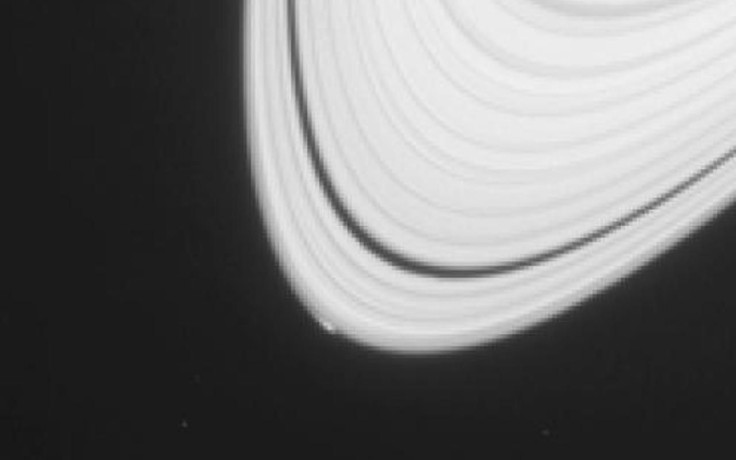NASA’s Cassini Witnesses Likely Formation Of A New Moon Within Saturn’s Rings

New images of the rings of Saturn, captured by NASA's Cassini spacecraft, have revealed the formation of a small icy object, which, astronomers say, could be a new moon, and provide fresh insights into Earth's relative distance from the sun.
The images, which were taken in April 2013 by Cassini's narrow-angle camera, show disturbances at the extreme edge of Saturn's A ring, the outermost of the planet's large, bright rings. One of those disturbances is an arc, 750 miles long and 6 miles wide, and about 20 percent brighter than its surroundings. Scientists have also spotted unusual swellings in the typically smooth profile at the ring's edge, which they say were caused by the gravitational effects of a nearby object.
“We have not seen anything like this before,” Carl Murray of Queen Mary University of London, and the study’s lead author, said in a statement. “We may be looking at the act of birth, where this object is just leaving the rings and heading off to be a moon in its own right.”
The scientists said that the new object -- informally named Peggy -- seen in the images is not expected to grow any larger and could even fall apart. But, the process of its formation and its outward movement is likely to help better understand how Saturn’s icy moons, including Titan and Enceladus, may have formed in more massive rings long ago.
According to the study, published Monday in the journal Icarus, the observations also provide insight into how Earth and other planets in the solar system may have formed and migrated away from the sun.
The object is said to be too small to see in the images recorded so far, but scientists estimate that it is probably no more than about a half mile in diameter.
“Saturn's icy moons range in size depending on their proximity to the planet -- the farther from the planet, the larger. And many of Saturn's moons are comprised primarily of ice, as are the particles that form Saturn's rings,” NASA said, in the statement. “Based on these facts, and other indicators, researchers recently proposed that the icy moons formed from ring particles and then moved outward, away from the planet, merging with other moons on the way.”
Scientists believe that the process of moon formation in Saturn's rings has ended with Peggy, as Saturn's rings are now too depleted to produce more moons. NASA said that Cassini's orbit would move closer to the outer edge of Saturn’s A ring in late 2016, providing another opportunity to study Peggy in more detail.
© Copyright IBTimes 2025. All rights reserved.






















